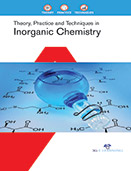Chemistry

Inorganic chemistry is concerned with the properties and behavior of inorganic compounds, which include metals, minerals, and organometallic compounds. Inorganic chemistry represents the traditional core of chemistry, with a history traceable over thousands of years. The use and significance of inorganic compounds had been invaluable to the society. Inorganic compounds are used as catalysts, pigments, coatings, surfactants, medicines, fuels, and more. They often have high melting points and specific high or low electrical conductivity properties, which make them useful for specific purposes. With these compounds, drugs and apparatuses have been available for human benefit. Mercury for instance has been useful for treating various illnesses as well as a major component of some medical instruments. Copper on the other hand has been beneficial in treating ulcers, cancers and nervous disorders. Though known to be poisonous, early and current medical sources had identified inorganic arsenic compounds to be useful for medical purposes as well. While some inorganic drugs had been known to be toxic and harmful to health, the ability to develop alternatives has been promoted and enhanced. Hence, the role of inorganic compounds such as mercury, copper and arsenic in the health industry will in no doubt be developed in the years to come. The periodicity of chemical properties arises from filling of successive quantum mechanical shells of electrons. Inorganic chemistry draws its strength from its great practical utility. The most rapidly developing technologies, such as communications, electronics, energy generation and conservation, environmental protection, and aerospace, have generated demands for new materials with unprecedented physical properties or compositional control. Many of the current research activities in inorganic chemistry are directed toward meeting these needs.
This book “Theory, Practice and Techniques in Inorganic Chemistry” covers the study of the structure, properties and reactions of all chemical elements and compounds except the myriad organic compounds and behavior of inorganic and organometallic compounds. It deals with the synthesis and behavior of inorganic and organometallic molecules and materials. The text starts with chemical periodicity that provides a systematic and extremely useful framework for organizing a lot of information available on the chemical behavior of the elements into a few simple and logical patterns. Furthermore, it illustrates the chemical bonding and structure in addition to the study of chemical processes that cause electrons to move as well as chemistry of nonmetallic elements, main-group metals, and transition metals. It closes with a chapter revealing on organometallic compounds.